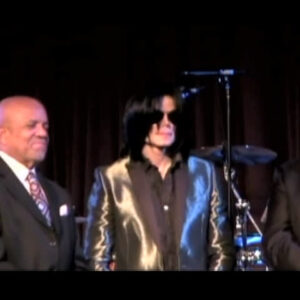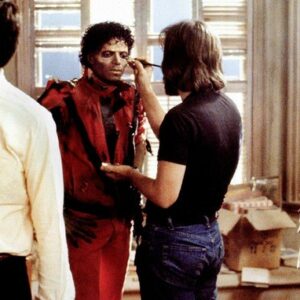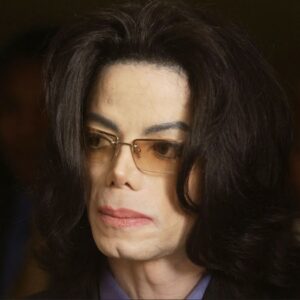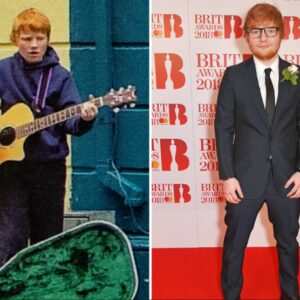Introduction to the Soundtrack of the “Harry Potter” Films
The “Harry Potter” film series, spanning eight films over a decade, is not just a tale of magic, friendship, and adventure; it is also a masterclass in the art of storytelling, greatly enhanced by its music and sound design. The sweeping orchestral scores, haunting melodies, and carefully crafted soundscapes transport viewers into J.K. Rowling’s enchanting world, making the experiences of Harry, Hermione, and Ron resonate deeply with audiences of all ages. The emotional weight of the story is lifted and accentuated by the music, forming a crucial pillar in the series’ storytelling structure.
At the forefront of this iconic franchise is Daniel Radcliffe, who embodies Harry Potter, the boy who lived. Radcliffe’s portrayal of Harry has become synonymous with the character, much like the unforgettable music that underscores his journey. As we traverse the world of wizards, witches, and magical creatures, it is the score that colors the narrative with emotion, excitement, and a sense of wonder. The music not only enhances the cinematic experience but also helps shape our understanding of the characters’ emotions and growth throughout the series.
Key Composers and Their Contributions
The “Harry Potter” films feature a diverse array of musical talents, each bringing their unique style to the franchise while adhering to a coherent sound that ties the series together. The initial films were scored by John Williams, whose work laid the foundation for the musical identity of the series. Williams is renowned for his ability to craft memorable themes, and his “Hedwig’s Theme,” which serves as the series’ musical signature, is no exception. This hauntingly beautiful melody captures the essence of the magical world and evokes a sense of nostalgia for fans. It recurs throughout the series, adapting and evolving as the characters grow, signifying Harry’s journey from innocence to maturity.
After Williams, Patrick Doyle took the helm for “Harry Potter and the Goblet of Fire,” infusing the score with a new vibrancy that matched the darker themes of the film. Doyle’s music reflects the internal and external struggles faced by Harry and his friends as they navigate their teenage years amid the rising threat of Voldemort.
Following Doyle, Nicholas Hooper composed the scores for “Order of the Phoenix” and “Half-Blood Prince,” further developing the series’ sound by emphasizing the emotional arcs of the characters. Hooper’s compositions are often more subdued, focusing on character-driven moments rather than grand, sweeping orchestras, thus highlighting the internal conflicts faced by Harry, Hermione, and Ron.
Finally, Alexandre Desplat brought his unique flair to the final films, “Deathly Hallows – Part 1” and “Part 2.” Desplat’s work features a blend of both orchestral and modern elements, encapsulating the tension and resolution that characterizes the climax of Harry’s story. His score is marked by themes of loss and courage, mirroring the characters’ struggles in a world rife with danger.
Through the collaboration of these composers, the “Harry Potter” series boasts an extensive repertoire of iconic themes and motifs. The use of recurring musical themes throughout the films not only reinforces the narrative but also strengthens the audience’s emotional connection to the story and its characters.
The Role of Music in Enhancing Storytelling
Music plays a pivotal role in enhancing storytelling in the “Harry Potter” films, guiding the audience’s emotional responses to pivotal scenes and moments. Each score reflects the tone and mood of the scenes, with variations in tempo, instrumentation, and melody that correspond to the unfolding narrative.
For instance, light-hearted moments often feature whimsical instrumentation, such as flutes and strings, which evoke a sense of joy and wonder. This can be seen during scenes at Hogwarts, where the magical atmosphere is brought to life through playful melodies that underscore the characters’ camaraderie and youthful exuberance.
Conversely, as the story delves into darker themes, the music shifts to reflect the rising tension and peril. In “Harry Potter and the Prisoner of Azkaban,” the score captures the ominous presence of Dementors through deep, resonant brass and chilling strings, creating an auditory landscape that mirrors Harry’s own fears and struggles. The haunting quality of the music serves to amplify the emotional weight of pivotal moments, such as Harry’s confrontation with his past and the looming threat of Voldemort.
Moreover, specific tracks resonate with key character developments, particularly in Harry’s transition from childhood to adulthood. As he faces trials that challenge his bravery and resilience, the score evolves with him. For example, in “Harry Potter and the Deathly Hallows – Part 1,” the music reflects Harry’s isolation and determination as he embarks on a quest fraught with danger. The haunting melodies evoke a sense of loss and longing, mirroring Harry’s emotional state as he grapples with the reality of his mission.
The crescendo of the score during climactic moments—such as battles against dark forces—heightens the stakes and immerses the audience in the chaos and intensity of the conflict. The combination of visual and auditory elements creates a powerful synergy that deepens the audience’s engagement with the narrative, making the music an integral part of the storytelling process.
Sound Design and Atmosphere
In addition to the music, sound design plays a crucial role in creating the immersive atmosphere of the “Harry Potter” films. The meticulous attention to detail in sound effects complements the score, enhancing the sense of wonder and excitement as characters navigate the magical world. From the swish of a wand to the crackling of spells, each sound is carefully crafted to immerse the audience in the wizarding experience.
The sound design effectively builds tension during critical moments, such as battles between wizards and dark creatures. The clash of spells, the thud of magical impacts, and the echoing roars of mythical beasts combine to create a visceral experience that pulls viewers to the edge of their seats. The sound effects often serve to amplify the emotions conveyed through the music, ensuring that every action and reaction resonates powerfully.
Moreover, the subtle sounds that accompany magical moments—like the fluttering of owl wings or the chiming of enchanted objects—add layers to the world-building in the films. These auditory cues enhance the viewer’s understanding of the magical realm, making it feel alive and tangible. The ambient sounds of Hogwarts, with its creaking walls and distant whispers, further envelop the audience in the setting, fostering a sense of belonging within the magical community.
Sound design also plays a pivotal role in character development. For example, the sonic motifs associated with specific characters, such as the distinct sound of Harry’s broomstick during Quidditch matches, create an audio identity for each character. This auditory association helps audiences connect with the characters on a deeper level, reinforcing their emotional journeys throughout the series.
Legacy of the Music in Popular Culture
The music from the “Harry Potter” series has transcended its original cinematic context to become iconic in popular culture. Themes from the films are instantly recognizable, often evoking strong emotional responses from fans, even years after the release of the final film. This cultural impact is evident in various forms of media, including video games, merchandise, and fan-created content, which frequently reference the series’ beloved melodies.
The enduring legacy of the soundtrack can be seen in concert performances, where orchestras around the world perform selections from the films, allowing fans to relive their favorite moments through music. These concerts often attract dedicated audiences, showcasing the powerful connection between the music and the emotional experiences it evokes.
Furthermore, the soundtrack has inspired countless adaptations and interpretations, including covers by contemporary artists and orchestral arrangements that explore the themes in innovative ways. The music’s ability to resonate across generations ensures that the legacy of the “Harry Potter” films remains vibrant in the collective memory of audiences.
The emotional connection fans have with the music is further amplified by the nostalgia associated with the films. As audiences reflect on their experiences with the series, the melodies become intertwined with personal memories, enhancing the emotional impact of the music. This connection ensures that the soundtrack will continue to resonate with fans, long after the final credits roll.
Conclusion – The Power of Music in the “Harry Potter” Films
In summation, the soundtrack and sound design of the “Harry Potter” films are not merely embellishments; they are vital components that enhance the storytelling experience and resonate deeply with audiences. From the iconic themes composed by John Williams, Patrick Doyle, Nicholas Hooper, and Alexandre Desplat to the intricate sound design that immerses viewers in the wizarding world, the music breathes life into the narrative and elevates the emotional stakes.
The enduring legacy of the “Harry Potter” soundtrack highlights the profound power of music in storytelling. As audiences continue to connect with the characters and their journeys, the music remains a timeless element that resonates across cultures and generations. The magical melodies and evocative soundscapes ensure that the world of Harry Potter will continue to enchant and inspire, leaving an indelible mark on the hearts of fans worldwide.





